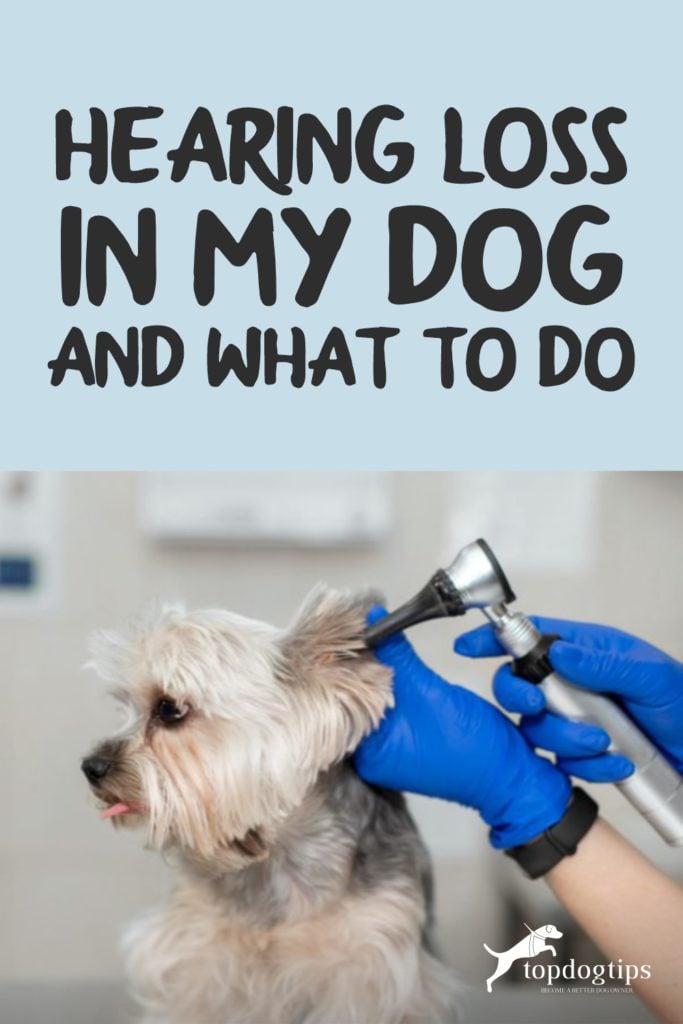
Table of Contents
- Signs, Symptoms, and Causes of Hearing Loss in Dogs
- What To Do If You Suspect Your Dog Has Hearing Problems?
- Treatments for Hearing Loss and Total Deafness
- How to Train and Take Care of Your Dog with Hearing Problems
- 1. Place A Tag That Says “Dog with Hearing Problems” When Outdoors
- 2. Use Non-Verbal Command Cues To Communicate
- 3. Learn Your Dog’s Body Language
- 4. Be Mindful With Sudden Approaches
- 5. Keep Yourself Alert With Your Pet’s Surroundings
- 6. Utilize Light in Training Your Pooch
- 7. Dogs Can Lip Read
- 8. Teach Your Dogs Sign Language
- 9. Teach Your Dogs Through Positive Reinforcement
- 10. Always Expect Frustration
- Hearing Loss in Dogs: Before You Go…
It's no surprise that the hearing capability of older dogs deteriorates as they age.
But did you know that younger ones also experience hearing loss?
Hearing loss in young dogs happens if they suffer ear damage due to an incident or have undergone ear surgery.
Depending on the severity of their hearing condition, it can be temporary, partial, or permanent. But it will likely become gradual through age.
Since your dogs might experience this over time, in this article, we will discuss the signs, symptoms, causes, and treatments of hearing loss in dogs.
Read below for more.

Signs, Symptoms, and Causes of Hearing Loss in Dogs
To determine if your dog is losing its hearing capability, try to make a sound out of the things you have inside your house.
Suppose they don't respond to any of the stimuli you've created or barely react to them (e.g., opening their favorite bag of chips or calling your dog by their name).
In that case, chances are their hearing ability is slowly deteriorating.
Hearing loss is a severe issue. Generally, it's caused by:
Disabilities by Birth
Disability by birth refers to congenital disabilities of the newborn pup. It can be due to their abnormal genetic structure, chromosomal disorders, or more.
Once your canine companion is affected by this, they can either suffer from sensorineural or conductive deafness, depending on the severity.
In sensorineural deafness, one cannot restore and retain sound signals from the ear to the brain, rendering them irrevocably deaf.
On the other hand, in conductive deafness, your dog's mind cannot conduct sounds from the outside to the middle ear.
Hence, there's a possibility that they might still gain back their sense of hearing once treated.
Sometimes, congenital disabilities in hearing don't necessarily happen primarily during their “puppy stage.” Instead, it will develop over their lifetimes.
It's a common belief among dog owners that dogs prone to having congenital disabilities are breeds with white fur coats. Interestingly, breeds with pure white fur coats don't show signs of ear problems like the Samoyed.
In contrast, listed below are the breeds that are prone to developing congenital hearing loss:
- Australian Shepherds
- Pekingese
- Bull terriers
- Akita
- Catahoula Hounds
- American Eskimo
- Dalmatians
- English Cocker Spaniels
- Norwegian Dunkerhound; and
- English Setter
If your dog belongs to any of the breeds mentioned above, it’s best to schedule an appointment with your veterinarian to know if they'll have hearing loss problems or not.
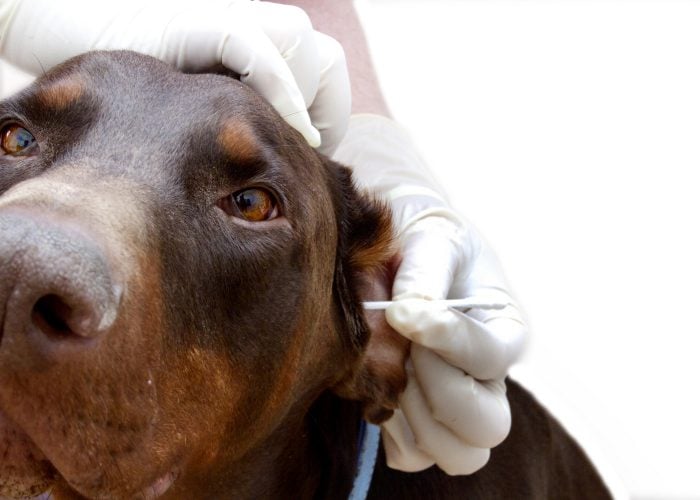
Ear Infections
In most cases, the living bacteria in your dog's ear are the leading cause of ear infections, especially if you leave your dog unsupervised during their playtimes.
One of the most common ear infections dogs experience is a middle ear infection, also known as otitis media.
Otitis media is a condition that makes your dog's ears irritated and uncomfortable. It is primarily due to the bacteria streptococcus pneumonia.
- No.1 Best Selling and...
- Instantly starts working to...
- Easy, Daily, One Step Process...
- Easy to Use and Effective:...
- Made in the USA: Proudly...
Another ear infection that can occur in your dog's ears is a yeast infection. If your dog's ears are wet and musty, it's a definite site for the yeast to grow in.
Breeds with long, floppy ears are more susceptible to any bacterial infection, leading to hearing loss.
If you see questionable pus or liquid coming out of your dog's ears, it can be a sign.
Significant Injuries
On the other hand, a dog might also experience hearing loss if they encounter an accident later in life that might cause them to temporarily or permanently lose their hearing ability.
For example, getting exposed to frequent loud sounds may damage any crucial part of their ear, especially their eardrums.
However, in most cases, a dog's hearing loss is due to the damage of their cochlea, a vital auditory organ.
The dog is also at risk of hearing problems if you clean their ears excessively or put foreign objects inside their ear.
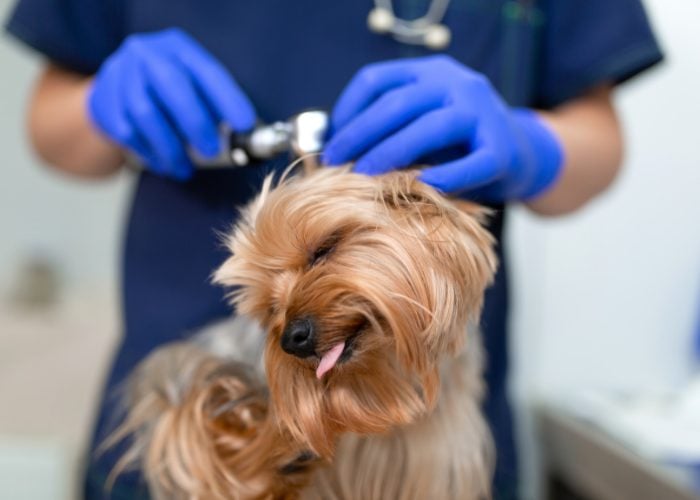
What To Do If You Suspect Your Dog Has Hearing Problems?
Bear in mind that you don't have to bang pots and pans to try to get your dog's attention.
You may attempt to recreate sounds that act as triggers for your pup's alertness.
However, if they do not respond to the stimulus, your dogs may have lost their sense of hearing permanently.
In contrast, if only part of your dog's ear is affected, they might only flinch.
Nonetheless, to ensure that your dog is in good condition, you must bring them to their veterinarian for a thorough checkup.
They will precisely determine any possible causes of hearing loss by implementing several ear tests on your dog.
Your dog might even undergo a brainstem auditory evoked response or BAER test to determine if it's a congenital disorder or acquired.
This test determines if the brain reacts to auditory stimuli, which measures the level of hearing loss.
Aside from that, your dog will also take several diagnostic hearing tests, such as ear swabbing.
You can get this done through veterinary teaching hospitals or animal facilities offering specialty practices.
Subsequently, the veterinarian or any medical professional attending to your pet may or may not provide a prescription you'll follow for their treatment.
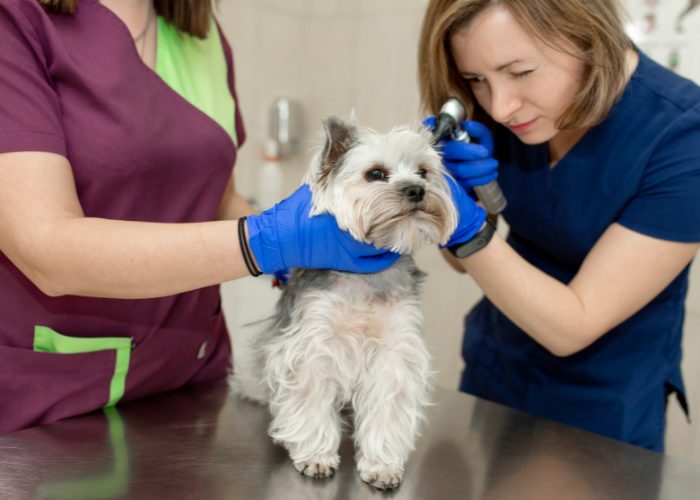
Treatments for Hearing Loss and Total Deafness
1. Hearing Aids
After doing your pet's tests, you may think about installing hearing aids into your dog's ear with a veterinarian's help.
Both hearing aids and cochlear implants are available within the market and are aimed specifically at canines.
The price range for the item is said to be around $3,000 to $5,000.
Bear in mind that hearing aids do not restore your pet's original hearing quality. Instead, it will only help them hear more.
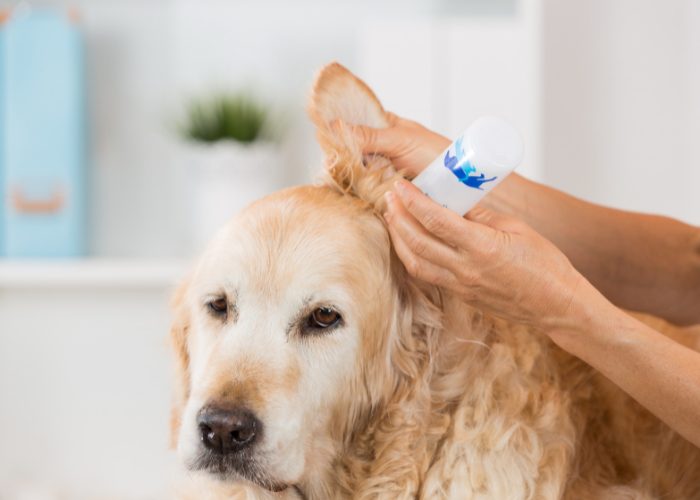
2. Treatment For Any Infections Present
The veterinarian may approve antibiotics and ear flush medications for your pup if it’s confirmed they have an infection.
Depending on the prescription, you might have to administer them daily within 2 and 3 weeks.
There are also multiple medications suitable for your dog’s comfort and anti-allergic necessities in the meantime.
3. Cleaning Blocked Ear Canals
The treatment required for this method includes removing the blockage and the toxic material that’s affecting your dog’s ear.
This method is necessary for anything related to potential toxins and foreign material trapped in them.
The veterinarian in charge may have to do a thorough ear cleaning after checking their external and middle ear canals.
4. Removal of Tumors
In cases wherein dogs have tumors inside their ears, surgery is the only possible treatment for it.
This method is to clear up your dog’s ear canals so that they can continue hearing and avoid infections and irritations.

How to Train and Take Care of Your Dog with Hearing Problems
Most pet owners often complain about having difficulty getting their dog’s attention because of their hearing loss.
This problem might be stressful at first, but with this newfound challenge for your dog, you must now implement a new set of commands to make things easier for them.
Any dog with hearing problems may live a regular life as long as its owner is patient and dedicated to helping them.
Here are a few tips to help your dog conform despite their disability to hear anything.
1. Place A Tag That Says “Dog with Hearing Problems” When Outdoors
Since one cannot immediately tell if a dog has hearing problems, you must place a visible sign on your pup as a vest or around their neck.
You may also incorporate it on your dog’s collar, including their name and your contact information. This method is beneficial, especially in scenarios of your dog suddenly losing its way or when others find them.
- S-M High quality adjustable...
- All products feature durable...
- Color coded with wording to...
- Available in buckle and...
2. Use Non-Verbal Command Cues To Communicate
If your dog's partially deaf, you may still use your words, but you must emphasize your hand gestures to help them further. You may wave your hands or raise a few fingers to stress your command.
Furthermore, it would be best to teach them hand command cues such as “stay” or “come” and stay within their peripheral version as much as possible.
- Smith, Cath (Author)
- English (Publication Language)
- 69 Pages - 05/18/2017...
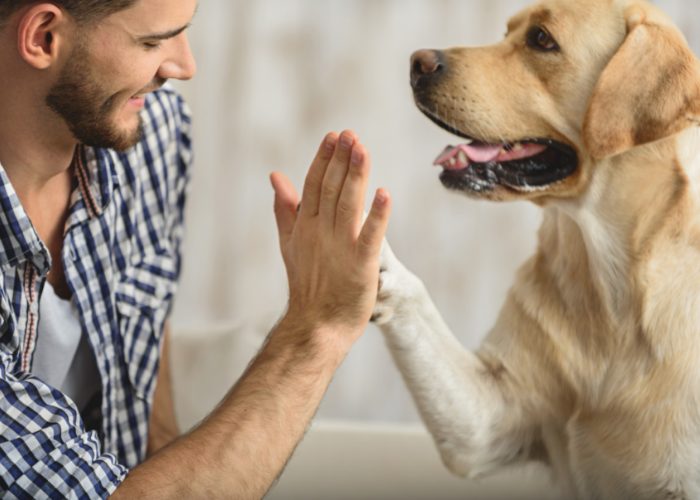
3. Learn Your Dog’s Body Language
Dogs are experts in reading their owner's body language. Thus, as an owner of a handicapped dog, you must also learn their body language.
In this way, both of you can communicate through it.
If you're having difficulty figuring out some of their body language, try to ask questions from owners in a similar situation with you.
Veterinarians can help too!
4. Be Mindful With Sudden Approaches
When dogs have hearing problems, they become more sensitive to their environment and everything that surrounds them.
Thus, when something or someone suddenly approaches them, they might be apprehensive about it.
To address this, you may resort to getting their attention by stomping on the ground or lightly tapping them on their head to let them know you’re there when you get near.
But it would be best to do this only when you are in your pet’s line of vision to avoid surprising or startling them.
5. Keep Yourself Alert With Your Pet’s Surroundings
With your pet's hearing problem, playing in the yard, at home, or even in a park will now become harder for you and your dog.
In these situations, most experts suggest using a vibrating dog collar. In this way, you'll be able to call for their attention without actually calling or touching them.
However, bear in mind to buy a vibrating collar, not a shock collar. You can buy this item in physical or online pet shops.
Furthermore, if you walk your canine friends outside, you should always keep them on a leash so you can pull them anytime if you need to.
It would be best if you also consider keeping them on the safe side of the road to prevent them from running towards it.

6. Utilize Light in Training Your Pooch
Did you know that you could use a laser tool or a flashlight to train your dog despite hearing problems?
Since they have lost their hearing function, it's natural for their other senses to heighten up, including their sight.
To start, help them identify their commands by using both hand gestures and clicking.
You may use hand or light signals that they can associate with the order.
For example, if you're trying to make them “sit,” gently tap the floor with your hands or flash your light on it.
Repeat this process until they can get it, and don't forget to give them treats once they successfully do it.
7. Dogs Can Lip Read
Did you know that dogs can lip-read?
They might not be able to hear you, but dogs with hearing loss tend to associate lip movement with specific actions or facial expressions.
To teach your dog lip-reading, you must emphasize every single syllable you speak directly to them. Furthermore, it would be best to highlight body language and hand signals when communicating with them.
8. Teach Your Dogs Sign Language
In addition to dogs knowing how to lip read, they also have a fantastic ability to learn sign language.
If taught correctly, your dog can learn American Sign Language (ASL). But, like command training, you will need a lot of patience and consistency.
9. Teach Your Dogs Through Positive Reinforcement
When training and teaching your dog with a hearing loss condition, you must always apply positive reinforcement to it.
Always remember to reward your dog every time they do their task successfully.

10. Always Expect Frustration
It's normal for an owner to feel frustration, especially when a dog recognizes the command but chooses not to obey.
Bear in mind that when these things happen, it's okay to feel discouraged.
Since we're used to communicating verbally, it will be hard to make our pets follow our commands, especially if they suffer from a hearing condition.
But get yourself a break, and proceed on teaching them again.
Hearing Loss in Dogs: Before You Go…
Any living creature, in general, relies a lot on its senses to do its day-to-day routines and tasks.
With this in mind, if they lose one of these senses, they'll heavily rely on the others left.
However, contrary to popular belief, a handicapped dog may still live a long and regular life if you're dedicated and patient enough to help them.
They can still learn things that normal dogs learn.
If you have a dog with a hearing loss problem, you'll not only find yourself learning how to be more patient with them but also more compassionate.
Learn more about dog hearing loss by reading our recommended articles below!
Related Articles:
- Deaf Dog Hearing Aids: 7 Easy Tips to Make Your Deaf Dog Live Normally
- Dog Ears 101: How to Care for Them and Prevent Problems
- Deaf Dog Symptoms: How to Tell if Your Dog is Deaf
Want To Share This…
Disclosure: We may earn affiliate commissions at no cost to you from the links on this page. This did not affect our assessment of products. Read more here and find full disclosure here.





